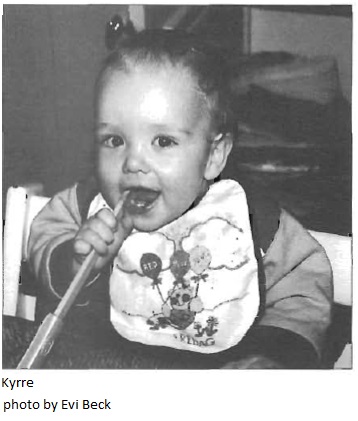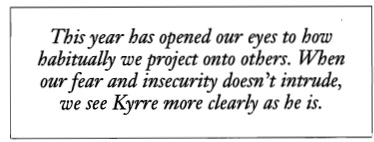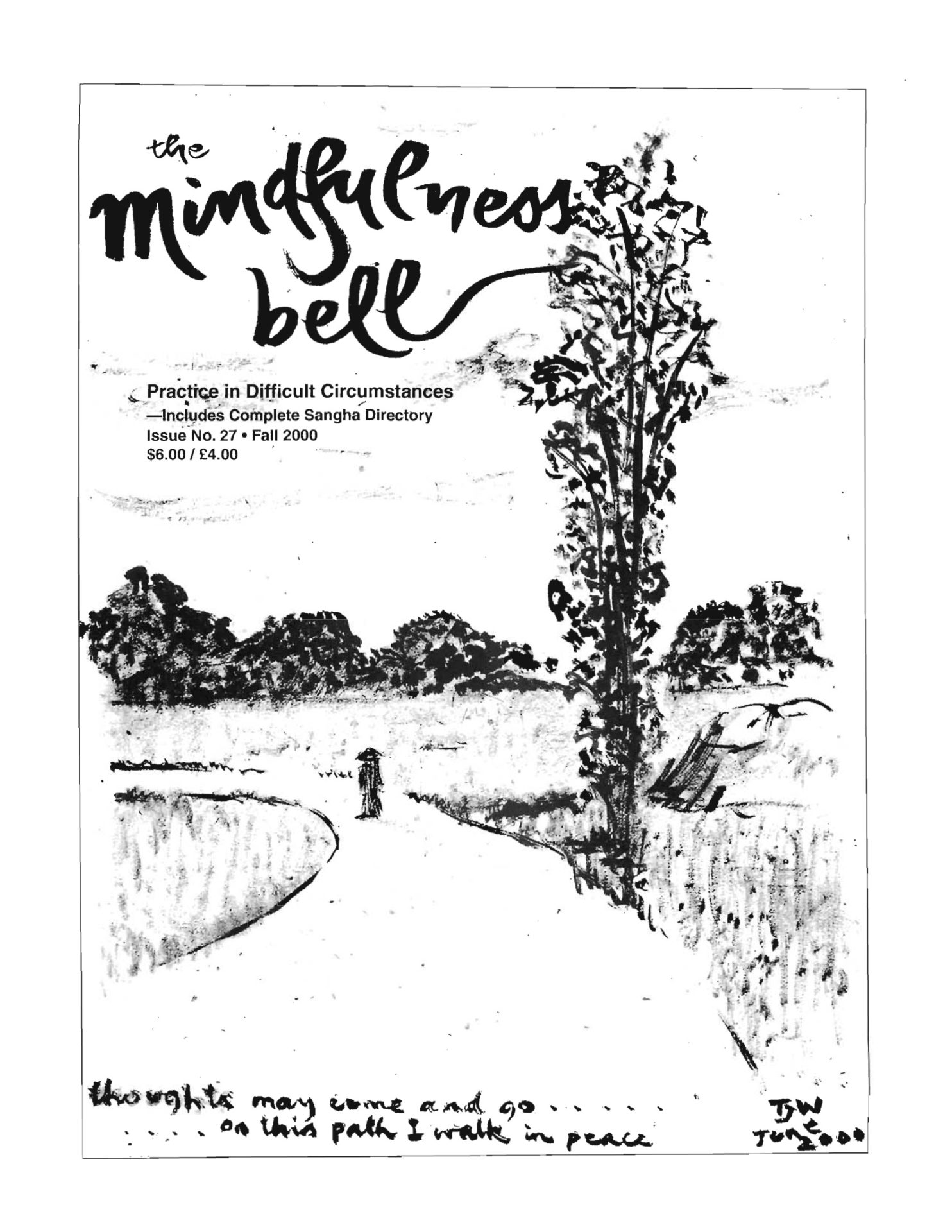By Svein Myreng and Eevi Beck
We sat down to meditate for the first time in weeks, and it felt wonderful. Then we heard small, unhappy noises from our baby boy, Kyrre, crawling on the floor next to us. Seeing Mom and Dad sitting still and withdrawn, was quite scary. Practicing mindfulness with a child is different from what we had expected, and different from all ideas we might have had of practice.
By Svein Myreng and Eevi Beck
We sat down to meditate for the first time in weeks, and it felt wonderful. Then we heard small, unhappy noises from our baby boy, Kyrre, crawling on the floor next to us. Seeing Mom and Dad sitting still and withdrawn, was quite scary. Practicing mindfulness with a child is different from what we had expected, and different from all ideas we might have had of practice. It is difficult to find time for yourself, and we often have no time for sitting meditation, or are too tired from waking up repeatedly at night. Yet, we need the support of formal sitting more than ever, and are learning to create time for it.
Kyrre draws us straight into the present moment, time and again. He lives fully in the present, and when he needs us, there is no saying, "I'll just finish reading this article first." We have to let go of what we are doing and be there for him. Of course, sometimes we have to have him wait, such as when we're holding a hot pot, or putting soiled nappies in the wash. On such occasions, Kyrre is usually patient with us, if we don't overdo it. So we try hard to be there without delay if we can, so when we really need to, we can ask him to wait.
The wonderful thing is that he's there for us too, fully present. This has had impacts I (Eevi) could not have imagined. One day I couldn't work out why he didn't settle in at the breast. He was in a good position, and I wanted him to get on with it so I could turn to something else afterwards. Suddenly I saw that his little frowning face was my face. I knew I was sitting still, but when I felt my brow, it was all frowned up. And sure enough, as soon as I returned to my body, relaxed my face and other tensions, his unease evaporated and he sucked happily away. I learned then to check my own agitation whenever he seemed inexplicably restless!
Letting go is, of course, one of the main parts of the practice. Holding on—to desires, fixed ways of doing things, opinions, and our self-image—keeps us unfree. Kyrre helps us let go by demanding our presence, by needing us—and by changing so fast. By the time we both felt confident changing his nappies on a changing table, he soon started moving about so much that we were afraid he'd fall down. In the end he did, and we moved nappy changing onto the floor, and later, to our laps. When Kyrre started crawling, we moved all dangerous objects out of his reach on the floor. Then he started standing, and we had to move the same objects out of his new and higher reach. One day, he could open drawers for the first time. These changes, commonplace for all parents, demand pretty constant mindfulness just to avoid accidents.

A more demanding exercise in letting go comes from seeing the stress caused to Kyrre and to us by filling up our days and weeks with too much programme. Time and again we have to make a conscious effort to protect periods of doing nothing.
The tremendous love that appeared in us when Kyrre was born, is something I (Svein) would never have been able to imagine. The main part of our practice is, in a way, to let this love be expressed. So the challenge isn't so much staying mindful. For this, we now have our own little "Thay" to teach us each moment. The challenge is to find a balance between listening to the toddler's needs and wishes, and retaining a sense of rhythm to the day. This is not always easy.
One thing we have succeeded in, is to make a small ceremony before each meal. We light a candle, and sing a short verse of grace before we start eating. It's wonderful to see Kyrre's face light up in joy when he sees us light the candle or hears the song. Our simple ceremony gives him a sense of security and familiarity. We also use it away from home. On trips, we sing grace quietly before feeding him. Once, Kyrre got upset, when we joined another child in singing a different song: We had not been mindful that we had already lit the candle and were in the middle of his ceremony!
Stopping and looking at a tree is a healing practice during a busy day. Tonight, on a light Norwegian summer evening, we introduced Kyrre more closely to some trees near our block of flats. He was completely absorbed, touching a fir tree and then a birch, looking at an ant, ... ? He was radiant with a deep, quiet joy.
One aspect of our practice is to impart values and practices that are good for him and the world. We use cloth diapers, better for his skin as well as the environment. They take a bit more work, but folding nappies is an excellent meditation practice. The calm rhythm of repeated movements makes a break from rushing between chores. By choosing the convenient solution, disposable nappies, dishwasher, etc., many of us deprive ourselves of calming and centering work. With a baby, this kind of work is extra important. We have chosen not to have a TV set—a decision we are very happy with. We have read enough about the impact of television on the human body and mind to feel that it is a pretty dangerous device. (We think and hope our computer is less so!) Visiting friends or relatives who have a TV, we see Kyrre's attention getting sucked into the TV screen. It's virtually impossible to make him look away from it. We are aware that it may be more difficult to always keep him away from TV, but we hope the good seeds we plant now will have their influence.
We are aware that we are privileged—without money worries (because we try to live simply) and living in Norway, where people work less and get better social support than in many other countries. For instance, we had a one-year parental leave of absence from work, with 80 percent pay, dividing the free time between us.
Another privilege that means a lot to us is having Sangha meetings at our home every Thursday. Eevi and Svein take turns meditating with the others and being with Kyrre, and for the conversation after sitting, Kyrre joins the group. Though the Dharma discussion becomes less concentrated, this is a very joyful time for all, and we feel like Kyrre has an extra family
All the letting go brings lots of old knots to the surface, and challenges our habit energy. To take care of the irritation and selfishness that appear when we are tired from waking up several times a night for several nights running, or when Kyrre poops five minutes after we last changed his nappy and we need to make it for the subway—those are the great challenges of practice. The old "mindfulness virtues" are important: to recognise and acknowledge what you feel and accept it, even when it's irrational anger against your beloved child. Then, it's possible to breathe a few times so the anger can disappear, or ask your spouse for help.
Admitting our weaknesses—without self-judgment— may be most important of all. So many times I (Eevi) feel I am failing—as parent, as practitioner, and as an example for Kyrre. My practice from before he was born taught me the invaluable lesson that such feelings are never the whole picture. Just try again. And this life-transforming lesson is one I have been able to keep practicing. The practice helps us not lose faith when we fail to live up to our ideals. "A Zen master's life is one continuous mistake," said Dogen. A parent's life is, too!
And Kyrre is a perfect mirror. We project onto him reactions that can only stem from ourselves. As he can't talk yet, our communication, though rich, is limited to the concrete and to general moods. We may catch ourselves thinking he's impatient or irritated with us, only to see that it's our own mind, our fears we see. This year has opened our eyes to how habitually we project onto others. When our fear and insecurity doesn't intrude, we see him more clearly as he is.
Living with and through these challenges, we find it's crucial to keep communicating. We do the Beginning Anew ceremony when possible, and try to take time for each other. It is difficult at times, but very important. During this period of too little sitting and too little sleep, some of Thay's practices get a whole new meaning—the Four Mantras, the teachings on Right Speech, and the Five Awarenesses for married people. More than ever before, we feel part of a family lineage, grateful to the previous generations and committed to give Kyrre as much love and joy as possible. This is such a joyful time, taking care of our precious little son and of each other.
Now, Kyrre is even comfortable with us sitting a little in meditation—if we remember to smile!
Eevi Beck, True Compassionate Practice, and her husband, Dharma teacher Svein Myreng, True Door, live in Oslo, Norway. Their son, Kyrre, was born in May 1999. Svein's book, Plum Poems, was published by Parallax Press in 1999. Svein is at home with Kyree, while writing a book on meditation. Eevi works as a computer scientist



